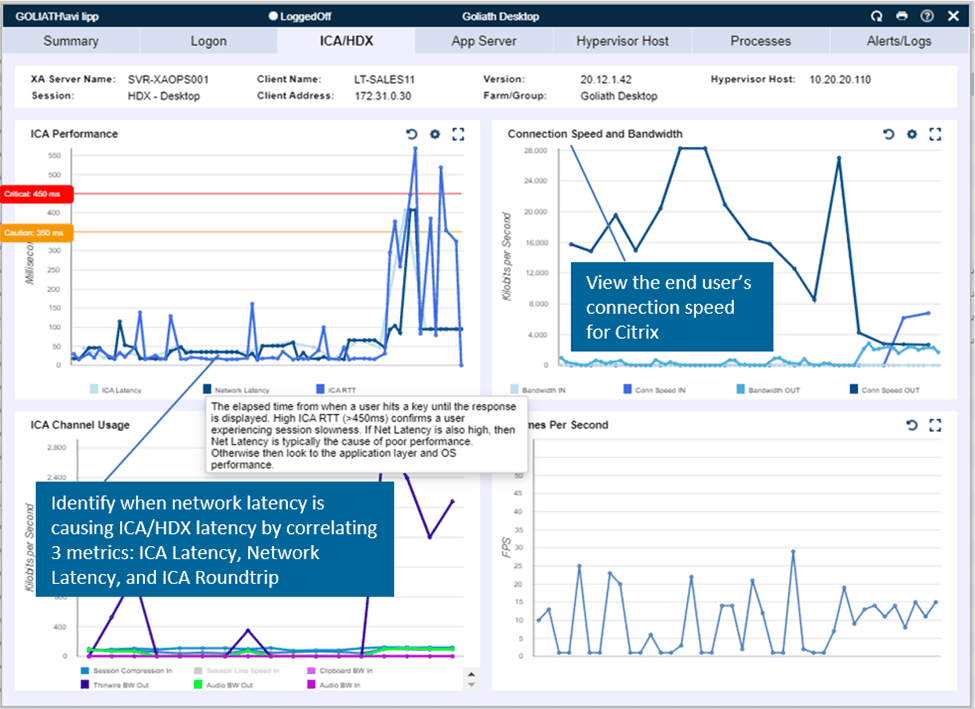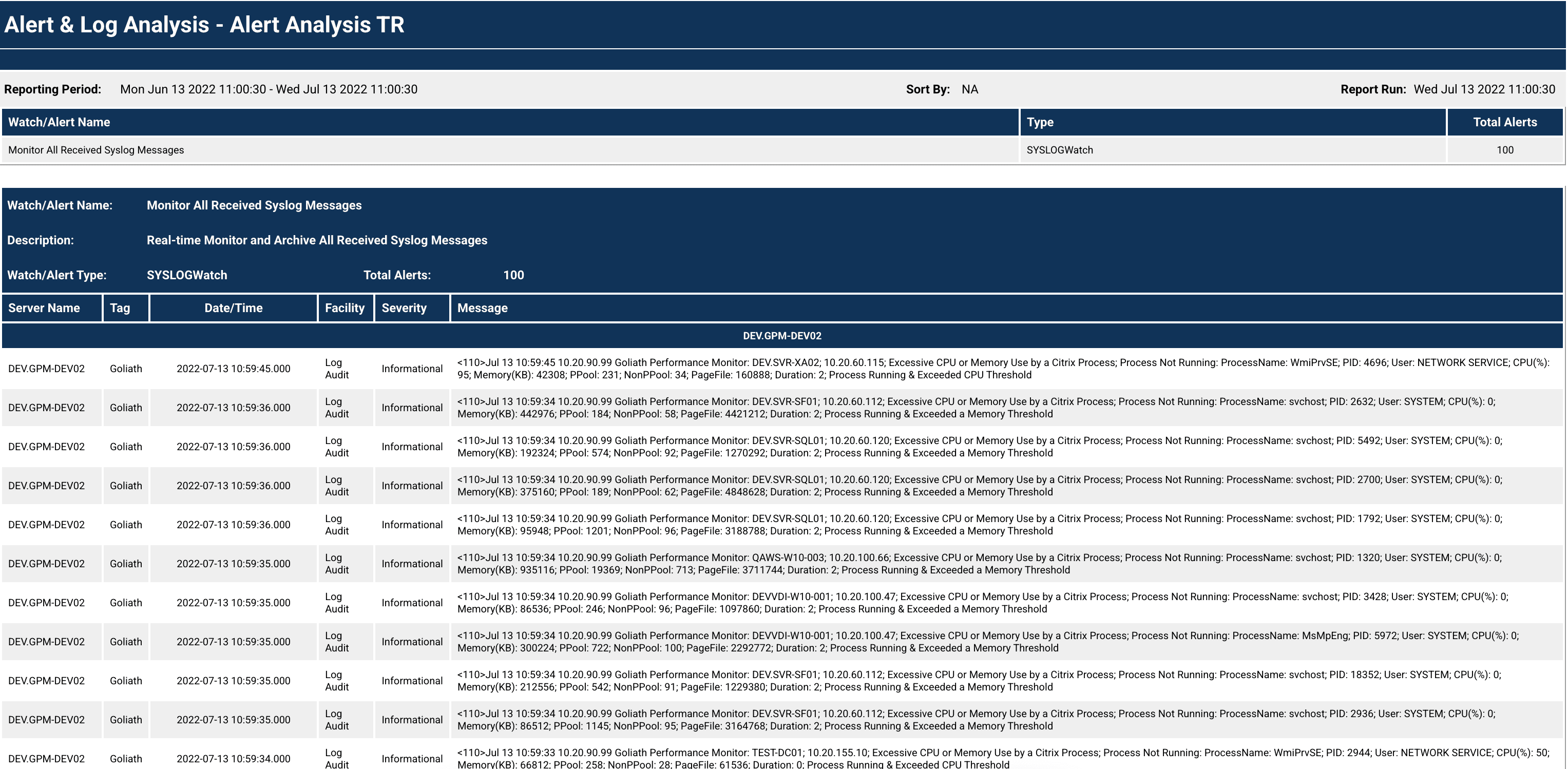How We Did IT
Central Maine Healthcare Improves Clinician Experience with Cerner by Drastically Reducing Time to Remediation

“Every morning, I use Goliath to set the stage for my day. The software proactively monitors events, conditions, and failure points 24/7/365 to help solve end user experience issues. It even alerts me before users are impacted.”
– Aaron Hilton, System Administrator at Central Maine Healthcare
Infrastructure
Cerner Millennium, Citrix Virtual Apps (XenApp)
Challenge
Troubleshooting Citrix Performance Issues Exhausts IT Support
“I’ve received so many tickets where I would spend hours troubleshooting four or more applications to try and find what was causing the latency when it was connection speed all along,” shares Aaron Hilton, a system administrator at Central Maine Healthcare system. Aaron is one of the main points of contact for resolving Citrix tickets, and the lack of visibility into the Citrix delivery infrastructure caused him to be reactive instead of proactive. “It took so much time to react to complaints that I didn’t have time or data to isolate the root cause and resolve the underlying issues that were actually causing the Citrix and Cerner performance issues.” Central Maine’s IT team needed a solution that would allow them to become proactive and reduce performance issues that were causing clinician frustration.
Solution
End-to-End Visibility into Cerner & Citrix End-User Experience Improves Clinician Satisfaction
Goliath Technologies was selected by Central Maine Healthcare to give their IT team an end-to-end view from the initiation of a Cerner session, through the logon process and experience while using the application. All the data is presented based on what the user is experiencing. The traditional IT approach is to monitor the health of individual IT elements like networks, servers, storage, and the applications. This, however, offers no insights into how the IT delivery infrastructure is performing and one is left to infer that the end user is having a good experience. Unfortunately, that is often not the case and administrators are regularly surprised by complaints without the details necessary to solve the problem. Goliath approaches it from the end-user’s perspective and proactively identifies if there is slowness, for example, and then identifies which IT element is causing the issue to help pinpoint root cause. Aaron remarked, “Goliath has improved the credibility and reputation of the IT department due to the success with resolving clinician issues. In addition, other Cerner application support analysts are coming to me to get user experience data that Goliath collects.”
Resolving “Citrix is Slow”
The very ambiguous “Citrix is slow” complaints have increased since the pandemic when their users went remote. With Goliath operational, Aaron and his team have been able to quickly determine if issues actually came from the Citrix or data center side, or if they were the result of the end-user’s behavior. The ability to drill all the way down into an end user’s session and analyze an array of visual proof, in real time, makes it much less challenging to convince end users that something on their end is the cause of their performance issues.
In the past, the team handled persistent issues by holding a weekly committee meeting to work together and try to remediate them. Now, with the use of Goliath’s technology, Aaron has become invaluable to his team as he has insights that not everyone else is able to see, and is even able to cut down the amount of time required for the meeting. Anyone could be in such a meeting and have a million assumptions of what the root cause is, Aaron tells us, and then everyone points their fingers to each other – “not my problem!” – puts their hands up, and passes the buck off to another team. But when you have proof of something, or good information including visual representations in the form of graphs, it gives you really fast resolution.
Automated system notifications resolve issues before users are impacted:
In addition to responding to regular “Citrix is Slow” tickets, Goliath can also be used to set up reporting to track the status of different components of the Citrix environment. For Central Maine, this involves monitoring their use of drive space within their cache. “When the drives all fill up, the server becomes unstable and begins kicking users off. I’ve made some custom reports to alert me when they reach a certain threshold. I can then put the server into maintenance mode to get all the users off and do a quick reboot before anyone gets kicked off.” This kind of proactive management using Goliath’s documentation helps to keep server instability from unexpectedly interrupting the workday for end users. As the team grows more comfortable with the platform, they hope to start making use of Goliath’s remediation functionalities to allow the system to automatically update when the alert conditions are met.
Conclusions
Before adding the Goliath solution, they only had time to do the bare minimum in support and react to issues as they came up. Now that they have deeper insights into the root cause, they can solve issues quickly and have the documentation to put permanent fix actions into place. Goliath has enabled them to be proactive instead of reactive.
Aaron summed up his experience with Goliath this way, “I recommend Goliath to any other Citrix admin that has never used this before. Once you use Goliath, it is going to be your go-to tool for sure. The software is so user friendly and has such detailed metrics that I can resolve sporadic end-user experience issues incredibly quickly and move on to fixing longer term issues.”


